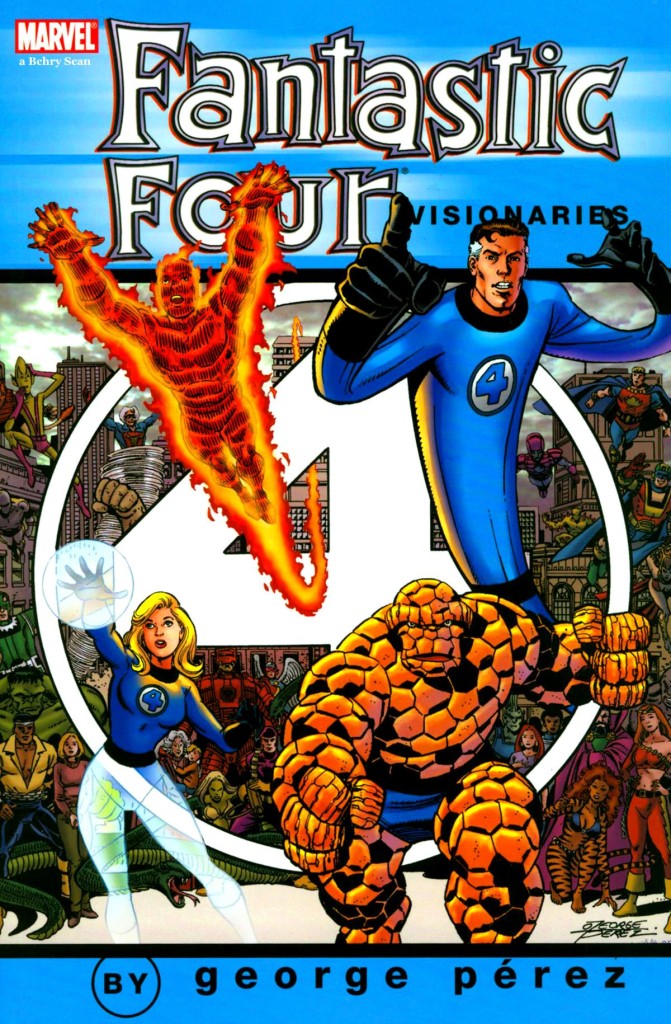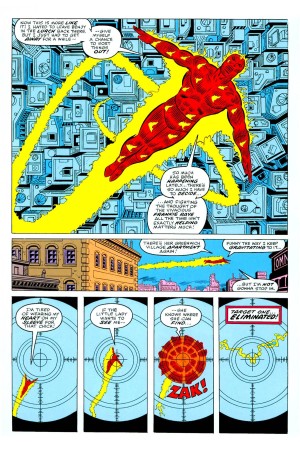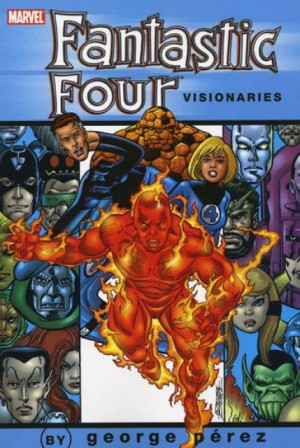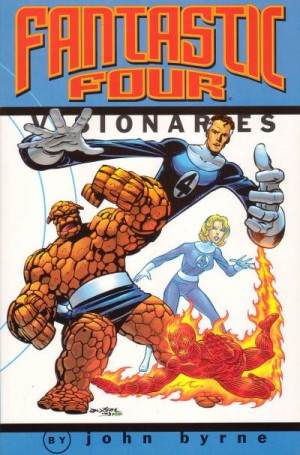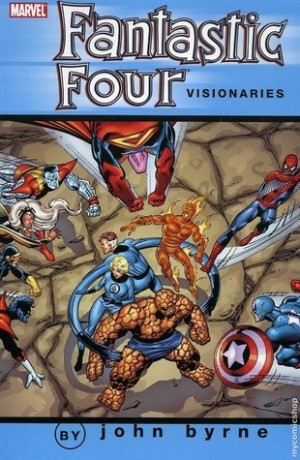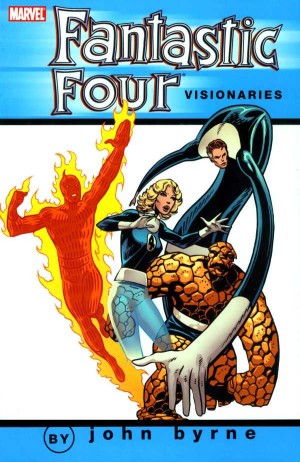Review by Ian Keogh
There’s a significant difference between this and its companion volume and the similarly packaged John Byrne Fantastic Four books. Byrne both wrote and drew his material, and although George Pérez would later write some of the comics he drew, for these books he’s just the artist, illustrating stories written by Roy Thomas, then Len Wein.
The earliest selection dates from 1975, still relatively early in Pérez’s career, and for those interested in seeing how much an inker contributes to a finished page a comparison with the Avengers issues he drew at the same time is very instructive. These can be found in The Serpent Crown. With the FF material experienced inker Joe Sinnott takes the time to correct the mistakes made by a novice, and these are far better looking pages of art. In fact the same comparison can be made by looking at the third chapter here, also inked by Vince Colletta. What these pages further display is that while Pérez may have been a little rough around the edges, he possessed a storyteller’s instinct from his earliest days as a professional. Some of the single page pin-ups he incorporated will probably embarrass the artist Pérez became, but everyone starts out somewhere.
There’s already an enthusiasm for packing his pages with as many characters as possible, and if that means designing a whole new group of villains like Salem’s Seven, then Pérez was up for the job. Unfortunately, they’re rather lame, and dealt with in a few pages. Interestingly, despite drawing four consecutive issues of Fantastic Four to open the book, it’s not until his fifth contribution that his credit finally progresses from ‘guest artist’.
All the strips are now somewhat dated by the use of bulging and self-reflective thought balloons, but Thomas constructs his plots with a greater depth and purpose than Wein whose work is very straightforward, and the best issue here revives a character surely no Fantastic Four reader considered they’d ever see again. The Impossible Man dated from the comic’s earliest days, a piece of whimsy from when Stan Lee and Jack Kirby were still feeling their way and pitted the FF against a pointy-headed green alien able to transform into any object or mimic any person, albeit as a green variant. His revival is twenty pages of mayhem on Earth, climaxing in Marvel’s own offices with the Impossible Man transforming into objects used by other Marvel heroes. More good jokes occur as the FF hold tryouts for a new member.
There’s an unfortunate aspect to this being a solely a showcase for Pérez, as what’s developing into an interesting story involving an alternate and villainous Reed Richards is cut off in its prime as Sal Buscema drew the concluding issue. Would it really have damaged the integrity of the project to have included this? Those who’d like to read it will find along with much of this content in Marvel Masterworks: Fantastic Four volume 17, with the remainder located in the preceding book. Alternatively the work is split between the eighth and ninth volumes of Essential Fantastic Four.
By the Wein stories Pérez is a much improved artist, with his page designs far more imaginative, although there’s the still the occasional wonky piece of anatomy – often the legacy of the largely self-taught comic artist.
The only extra provided is the cover illustration in various stages of completion from outline sketch to final version. The second book wraps up the remainder of the work Pérez compiled on the Fantastic Four and companion comics.
